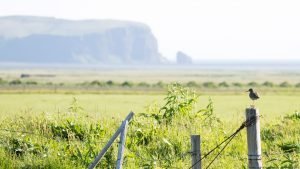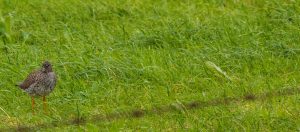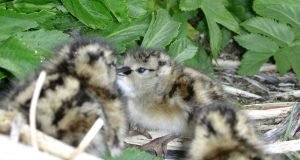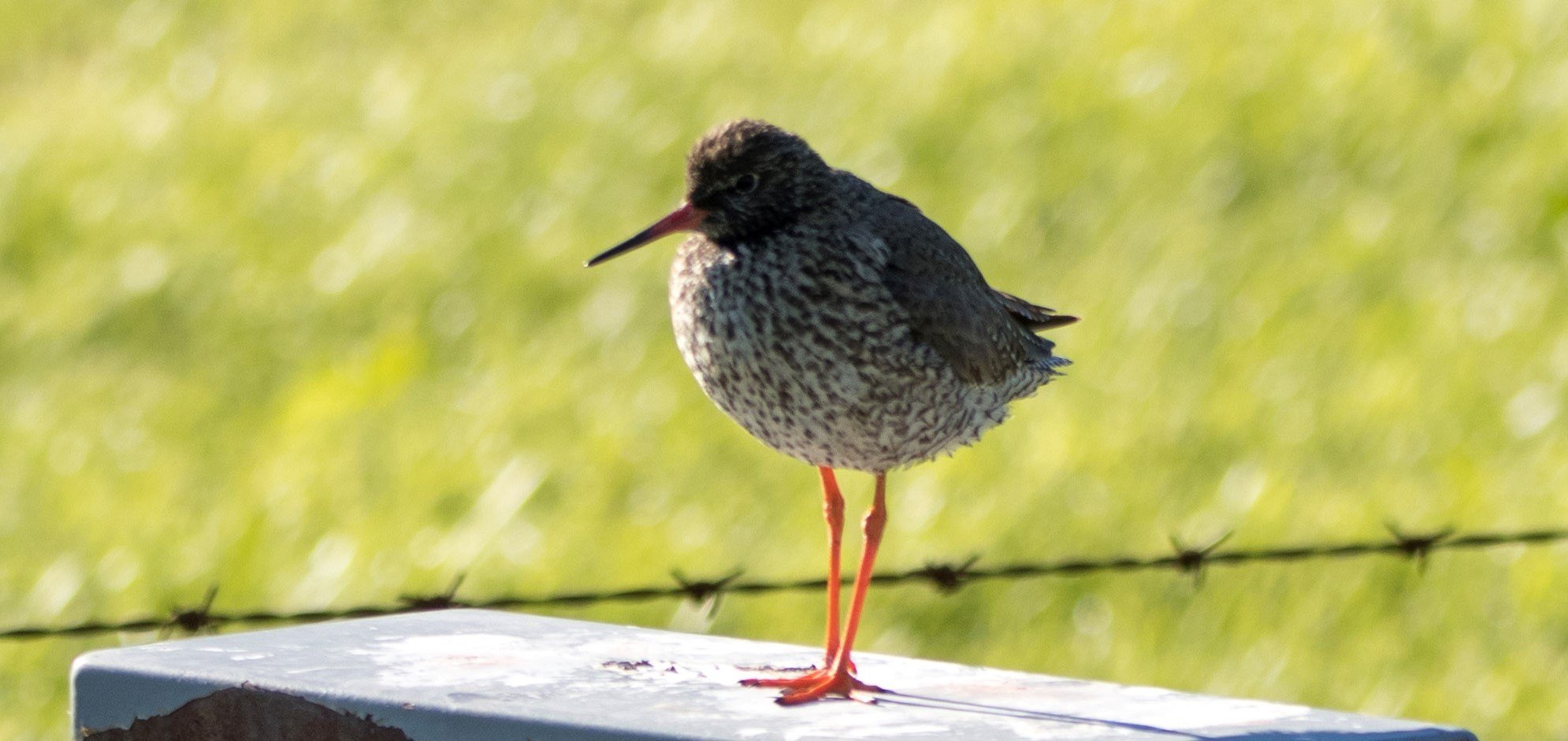This is the Common Redshank
The Common Redshank (Tringa totanus) belongs to the family Scolopacidae and the so-called waders (Charadeiiformes). Waders are migratory birds that come to Iceland in big flocks in the spring and leave in the fall. Even tough waders migrate together and are very sociable, they do not nest in colonies. Other representatives of the Scolopacidae family in Iceland are the Common Snipe (Gallinago gallinago), the Black-tailed Godwit (Limosa limosa), the Dunlin (Calidris alpina), the Purple Sandpiper (Calidris maritima) and the Whimbrel (Numenius phaeopus).
These birds live close to wetlands and seashores, where they can use their long beak to feed on invertebrates of many sorts. The Redshank is well distributed in Europe but also lives in Asia, all the way east to China. Icelandic Redshanks mostly spend the winter in the United Kingdom but have also been spotted in countries by the Northsea. The Icelandic Redshank population is estimated now around 75,000 breeding pairs, which is less than previously assumed. The birds live around Iceland but mostly in the lowlands, less than 400 m above sea level.

Five noisy facts about the Redshank
- The Icelandic name “stelkur” means stalk in English and refers to the birds’ long and slender legs.
- The English name “Redshank” and the Danish name “Rödben” means red legs but the Icelandic subspecies ( t. robusta) has orange legs.
- The young have such strong legs when they hatch that scientists can mark them with a metal ring very early on.
- Most Icelandic Redshanks fly to the United Kingdom in the fall. Some Redshanks, however, choose to live around Faxaflói and southwestern Iceland during the winter.
- Iceland is the most important breeding area for Redshanks in Europe, with over 75,000 breeding pairs.
Loud sounds of summer
The Redshank is gray or brownish. The head is dark with light dimples but the lower body has stripes. The back is darker than the belly. The underwing is white but wingtips black, the beak is straight and orange with a black tip. The slender orange legs are characteristic for the Icelandic Redshank. The long legs are of great use to wade in ponds and shores were the bird feeds. The English name Redshank and the Danish name „Rödben“ means red legs but the Icelandic subspecies (T. t. robusta) has orange legs. The Icelandic name “Stelkur” means stalk in English and points towards these long slender legs.
The Redshank is a medium size wader, weighing about 150 g (5.3 oz) and is 25-29 cm (9.8-11.4 in) long. The bird flies in a zig-zag motion and often glides after short flying sprouts on his 60-65 cm (23.6-25.6 in) wingspan. Redshank often sits on fence posts and grasstops where it watches over the nesting area and cries out loud alarms if anyone enters. One of the sounds of the Icelandic summer belongs to the Redshank. People wandering around in grassy areas should close their eyes and listen. Most likely a Redshanks is close by and calls out his warning call: tííjúú-tííjúú-tjiikk-tjiikk.

Nesting in hiding
Redshanks usually nest in grassy areas, in small dents in the ground that they line with dry grass. They start incubating 3-4 eggs in late May or at the beginning of June. The grasstops hide the nest and the incubating bird, so it can be difficult to spot a Redshanks nest if the bird stays still. Both male and the female Redshanks care for the nest for 24 incubation days. After hatching, the young stay in the nest for about 24 hours before leaving to feed themselves. The legs of newly hatched young are already well developed in the nest, making it possible to mark them with a metal ring very early on. The ring can last a lifetime and allow scientists to collect valuable data.
The young have great camouflage abilities, like other wader-young. They are dark brown with light-brown or yellowish stripes that help them blend in with the environment. The female birds often leave their young when they are fledged, to recover from the incubation. The males, however, stay with the young until they can fly. They show them good feeding areas and use their high pitch calling to warn them about common dangers.

Links to wade in
- Some key information from The Royal Society for the Protection of Birds
- What the Wildlife Trusts wrote about the Redshank
- A short video from the Directorate of Education
- Listen to the Redshank on YouTube
Author: Dr. Þórður Örn Kristjánsson
Photographer: Dr. Þórður Örn Kristjánsson

